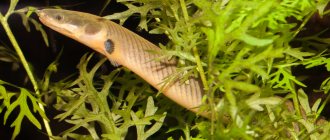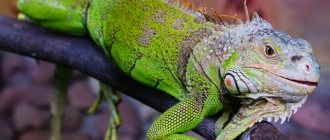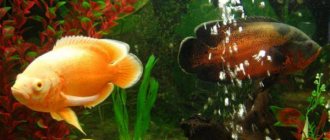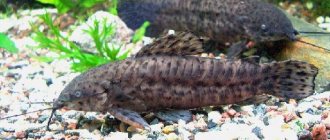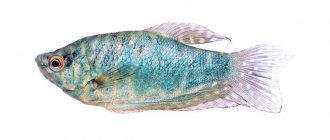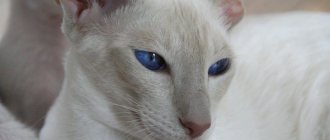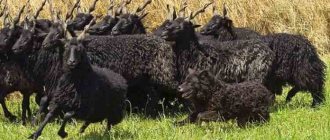How nice it is to have an aquarium in your apartment, where you can relax and watch the life of underwater creatures. All fish are good in their own way. But how beautiful small yellow cichlids look. They will be discussed below.
Labidochromis is native to Lake Malawi in Africa. Wild fish live in the western part of the lake at a depth of 10-50 m among stones and rocks. But the yellow beauties can only be seen in the northern part of the reservoir.
Description
The fish first became known in 1956. The distinctive external characteristics of Labidochromis yellow are:
- bright yellow body color;
- body compressed at the sides;
- large head;
- hard black fins;
- the presence of wide stripes of a whitish or light yellow hue on the large dorsal fin, often with black inclusions resembling a dotted line;
- the presence of black edging on the pectoral fins;
- black eyes.
Beginning breeders are often interested in how long the fish they describe live. Their lifespan can vary from 6 to 10 years, depending on how adequate living conditions are created for them. The description states that the body of the yellow cichlid reaches 8 centimeters in length. In natural habitats, it can be a couple of centimeters longer.
Possible neighbors
If you choose the right neighbors for your fish, keeping it in a common aquarium is not a problem. Other cichlids that live in nature near Yellow are suitable for proximity. Fish kept in the same aquarium should be close in size and temperament; their compatibility is good.
Compatibility chart of African cichlids with other aquarium inhabitants.
If you add smaller neighbors to the fish, the latter will be eaten. If the neighboring fish are very large, then the yellow cichlids will suffer: either they will be constantly chased in the aquarium, or they themselves will begin to unsuccessfully attack their neighbors who are superior in strength, perceiving them as competitors. It is strictly forbidden to keep labyrinthine, viviparous, characinth and goldfish together with Labidochromis Yellow . They will only be perceived as food. Ideal neighbors for the species would be:
- pseudotropheus;
- aulonocara;
- lamprologus;
- blue dolphin;
- cerulius;
- Ancistrus;
- cockroaches;
- corridors.
It is unacceptable to house Yellow with fish that also have a yellow or yellowish color.
With the right choice of neighbors for this species, it does not cause problems and pleases the owner with its interesting behavior. With a large aquarium area (more than 500 liters), keeping several varieties will allow you to create a special aquatic world at home, as close as possible to what can be observed in Lake Malawi.
Maintenance and care
In order for fish to live long, it is necessary to create optimal conditions, implying their proper maintenance and care. When setting up an aquarium, it is important to maintain the following water parameters:
- temperature – 24-28°C;
- hardness (dH) – 10-20°;
- acidity (pH) – 7.2 – 8.8°.
Yellow labidochromis needs air for normal existence, and therefore it is worth taking care to place a compressor or aeration pump in the container. A filter is also needed to purify the water from contaminants. The lighting must have a predominant blue spectrum.
When choosing soil, preference should be given to river sand, shell rock or marble and coral chips. Among plants, preference should be given to Vallisneria, duckweed, synnema, hygrophila, and Java moss. However, you should not plant cryptocoryne in the aquarium, since fish do not really like it.
Considering that pets prefer to live in pairs, it is not recommended to keep them alone. If an aquarist purchases 4 individuals, then he needs a hundred-liter tank. Water changes are performed once a week by 30%. Rocks, grottoes, artificial caves, and driftwood are suitable as decorations for an aquarium.
Conditions of detention
| Water temperature | Hardness of water | Water pH |
| 23-28 | 10-20 | 7,2-8,5 |
If the water meets all the parameters indicated in the table, then the fish, feeling comfortable, will live a full life. One-time and short-term deviations of water from the norm do not cause serious harm to the fish, but cause stress.
The fish are mobile, so they need a capacity of at least 100 liters per group, which includes 3 females and a male. Ideally, for fish, you need to start an aquarium of 300 liters and populate it with 10 females and 2 males. With this volume of water, the fish will have enough space for courtship and play. Since in natural conditions fish try to stay near the bottom, it is important that its area in the aquarium is as large as possible. Thus, the tank for these cichlids requires a wide and not very high tank.
These fish love to hide in shelters and protect them from their relatives.
The environment in the aquarium should be as close as possible to the natural living conditions of the fish. The soil is selected from coarse sand (grains 1-2 mm) or fine gravel. You can also put shell rock, coral or marble chips on the bottom. It is important that the soil is not sharp, as the fish will rummage through it, digging holes . Not all plants suffer from yellow cichlids, but it is better to choose cheap, quickly recovering species. The ideal design would be various grottoes and caves made from flat stones, as well as beautiful colored pots. Coconut shells lying on the bottom also look good.
To maintain the correct water parameters and sufficient purity, strong filtration is necessary. In an hour, 3 volumes of the aquarium should pass through the cleaning system. An external filter of sufficient power must be used. The required level of oxygen is provided by a compressor, without which cichlids cannot be kept. Since the water is required to be quite warm, with a stable temperature level, you need to install a heater in the aquarium, which will turn on automatically if the water cools down and its temperature falls below the one set on the device. You cannot keep Labidochromis Yellow in an aquarium without equipment.
Feeding
Fish are omnivorous. Their diet may contain various foods:
- dry;
- frozen;
- alive.
It is worthwhile to diversify your diet with foods containing plant components, such as:
- spirulina granules;
- scalded lettuce leaves, spinach;
- scalded slices of fresh cucumber.
Experienced breeders do not recommend constantly feeding fish with bloodworms or other live food. It is believed that their contents can cause various stomach diseases. In addition, you can pay attention to special food for cichlids, sold in veterinary pharmacies or stores. The maximum number of feedings per day is two. Once a week it is worth giving your pets a fasting day.
Feeding Hummingbird Cichlids
These fish are considered predators, but in fact their diet consists mainly of plant foods, which means there will be no problems with nutrition. For feeding, you need to buy inexpensive cichlid food in stores , as well as frozen food. From time to time you can please your aquarium pets with bark. To diversify your diet, you can add finely chopped lettuce and spinach leaves.
The amount of feed should be limited. Overeating is harmful for yellow cichlids. Experts recommend giving only half the daily requirement at a time. If you do not follow this rule, the fish’s belly will swell and they will die.
It is very useful to give your pets dry food, which is based on plant materials. They contain a large amount of vitamins, minerals and keratin, which is responsible for the bright color of the scales.
Reproduction and breeding
There are no nuances in breeding yellow labidochromis. It is not necessary to resettle the spawning couple. It is important that for spawning at home the basic requirements are met. Reproduction of this representative of the Cichlid family occurs as follows:
- the male finds a place inaccessible to other fish where he digs a hole;
- the female lays eggs in a dug hole;
- the male fertilizes the eggs;
- the female swallows the eggs with water masses, after which they are incubated in her mouth for 24-40 days;
- After the incubation period, the fry appear.
For a week, the young swim near their mother, after which they begin to form their own pairs and schools, and then separate.
Feed and feeding
Although yellow cichlids are more carnivorous by nature, they can eat any kind of food. In a home aquarium, fish will eat all types of live, frozen and dry foods. It is recommended to give food in equal proportions dry and live (frozen). It is also necessary to provide herbal products to prevent the typical disease of Malawian cichlids.
In order to get the brightest colors, it is recommended to feed the fish with food rich in carotene: bloodworms, brine shrimp, yellow vegetable products, and various dry foods to enhance color. Adding vitamins to water is also very useful.
Diseases and their prevention
Labidochromis is characterized by good health. If the fish behaves differently, it should be carefully examined. The most common diseases resulting from improper keeping of pets are:
- poisoning;
- injuries after fights between several males;
- fin rot;
- tuberculosis;
- ichthyophthyriosis.
The best prevention of diseases is maintaining optimal living conditions and proper care. Even an inexperienced breeder will be able to cope with the task assigned to him and enjoy the most beautiful representatives of the Cichlov family for a long time.
Diseases
In general, the fish are quite strong and do not suffer from frequent diseases. At the same time, if they eat improperly, they may develop bloating and obesity. Also, if fish are kept improperly, they can easily become poisoned or become infected with infectious diseases. To prevent health problems, you should follow a number of simple preventive rules, the main ones of which are:
- complete, varied feeding in small portions;
- keeping only species that suit the fish in size and temperament;
- ensuring comfortable conditions for fish in the aquarium;
- do not use chemicals for cleaning the aquarium and its equipment;
- carrying out quarantine measures before introducing new fish into the aquarium.
Most often, diseases in aquarium fish appear for the reason that a new fish, snail or plant, before moving into a home pond, was not previously kept in quarantine for 2 weeks, and it brought the disease into the general aquarium . This is a common mistake for beginner aquarists.
Labidochromis yellow can be kept even by not the most experienced aquarists.
Yellow cichlids are beautiful aquarium inhabitants and are deservedly considered one of the easiest cichlid species to keep. Strong and unpretentious fish will delight their owner not only with their appearance and behavior, but also with regular reproduction. The care and maintenance of these cichlids is very simple.
Reviews
Labidochromis yellow behaves differently: some successfully keep it with guppies and neons, while others show aggression towards their neighbors. Some aquarists keep yellowfish with American cichlids, but most agree that a tank with African species is the best and most aesthetically pleasing option.
Reproduction
Labidochromis yellow has subtle sexual differences; distinguishing a female from a male is not difficult. The male individual is characterized by a more saturated color during the spawning period. The fins on the abdomen of boys are dark, and those of girls are yellow. As the male gets older, his forehead becomes higher.
The gender differences between hummingbirds are not immediately obvious, but once you learn to distinguish between males and females, you will no longer confuse them!
The breeding process in an aquarium is as follows:
They increase the water temperature by 2-3 degrees, where the male independently finds the right place to court the females. Females lay eggs, and males fertilize them. Spawning can last from 40 minutes to 1 hour. After fertilization, the eggs are collected by the female and stored in a special throat pouch, where they develop for 3 weeks. After the fry hatch, they continue to live in the mother’s mouth for some time. They can be fed with live dust or ground dry food. The mother does not eat anything during pregnancy and therefore loses a lot of weight.
03:48
Labidochromis Yellow breeding, spawning, maintenance, Malawi cichlids in the aquarium.
Labidochromis yellow is not the most prolific species; an adult female can leave behind up to 40 fry.
Compatibility Labidochromis yellow
All Malawian cichlids are aggressive to one degree or another. But the entire Mbuna group - despite the fact that they are predominantly herbivores - are more aggressive. All “mbuna” live in shallow water - and their “personal territories” are relatively small and clearly visible. That’s why “mbuna” are extremely territorial. And the “Utaka” group, although predominantly predators, live at great depths among rocks and have large personal territories in which opponents are very difficult to see. And therefore, in general, they are more peaceful towards their own kind and less territorial. But the problem is that according to scientific calculations, all types of Malawian cichlids are descendants of ONE ancient species! The formation of new species occurs in our time - but genetically all Malawians are very close to each other. And they do not always distinguish individuals of their own species and randomly interbreed naturally in the most unimaginable variations. Therefore, they are either kept in species aquariums, or bred only at “landing” in spawning grounds - when the owner selects the producers himself, excluding spontaneous spawnings in a common aquarium.
Highly recommended viewing
These yellow cichlids are often called the most peaceful, dwarf cichlids in Africa. Well, one can agree with this opinion; labidochromis really get along well with their own kind. We can say that they are even slightly timid - they hide like mice in holes when there are sudden movements or knocking near the aquarium. However, do not forget about the burrow of any cichlid. They should absolutely not be kept with any goldfish, characin fish, labyrinth fish, or viviparous fish. Firstly, this is unnatural - the fish are from different habitats, secondly, the conditions of detention and water parameters vary and thirdly, labidochromis will show aggression towards the more peaceful inhabitants of the aquarium, especially during the spawning period.
Good neighbors for yellow labidochromis will be the same “calm” cichlids, for example, pseudotropheus and blue dolphins. Catfish-like fish (of the armored and loricariid families) get along well with elow - thoracatums, ancistrus, L-catfish .
Breeding
Reproduction of yellow yellows is easy to stimulate and often occurs without intervention. Breeding takes place in a general aquarium or in a spawning tank, where a couple of yellowfish are placed. The fry have a high survival rate even in a community aquarium.
Differences between a male and a female
Sexual maturity occurs at 7–8 months. Signs by which you can distinguish a male from a female:
- The coloring of yellow males is more intense, the eyes have dark spots;
- the edging on the fins is more pronounced;
- The pelvic fins are dark; the female can be identified by the yellow pelvic fins.
Spawning
Stimulate spawning by raising the temperature a couple of degrees. Labidochromis form stable pairs and prepare a nest in the ground where they will lay eggs. Sometimes females spawn on decorations and stones. In young labidochromis, the clutch consists of 8–10 eggs, in adult fish - up to 30 eggs. The female takes the clutch into her mouth for incubation. After three weeks the fry hatch. The female becomes emaciated because she does not feed during the incubation period. Parents continue to care for the fry, protecting them from danger.
Feed the young:
- living dust;
- artemia naupili;
- Cyclops;
- crushed with adult food.
Compatibility
Labidochromis yellowfish can be kept either in a cichlid or in a tank with other fish, since, unlike most cichlids, cerulius are quite peaceful and calm fish. However, when keeping a cichlid, it should be taken into account that there should be more females than males, otherwise the latter will start fights and skirmishes.
Labidochromis also demonstrate good compatibility with other species, provided that the neighbors have a different color. The best choice for settling with yellowfish is:
- Pseudotropheus
- Ancistrus and Corydoras catfish
- Melanothenia
- Hualonokara
- Blue dolphin
In order to preserve all pets, small fish such as neons, tetras and zebrafish, as well as viviparous phenotypes, goldfish and parrots, should not be added to labidochromis.
